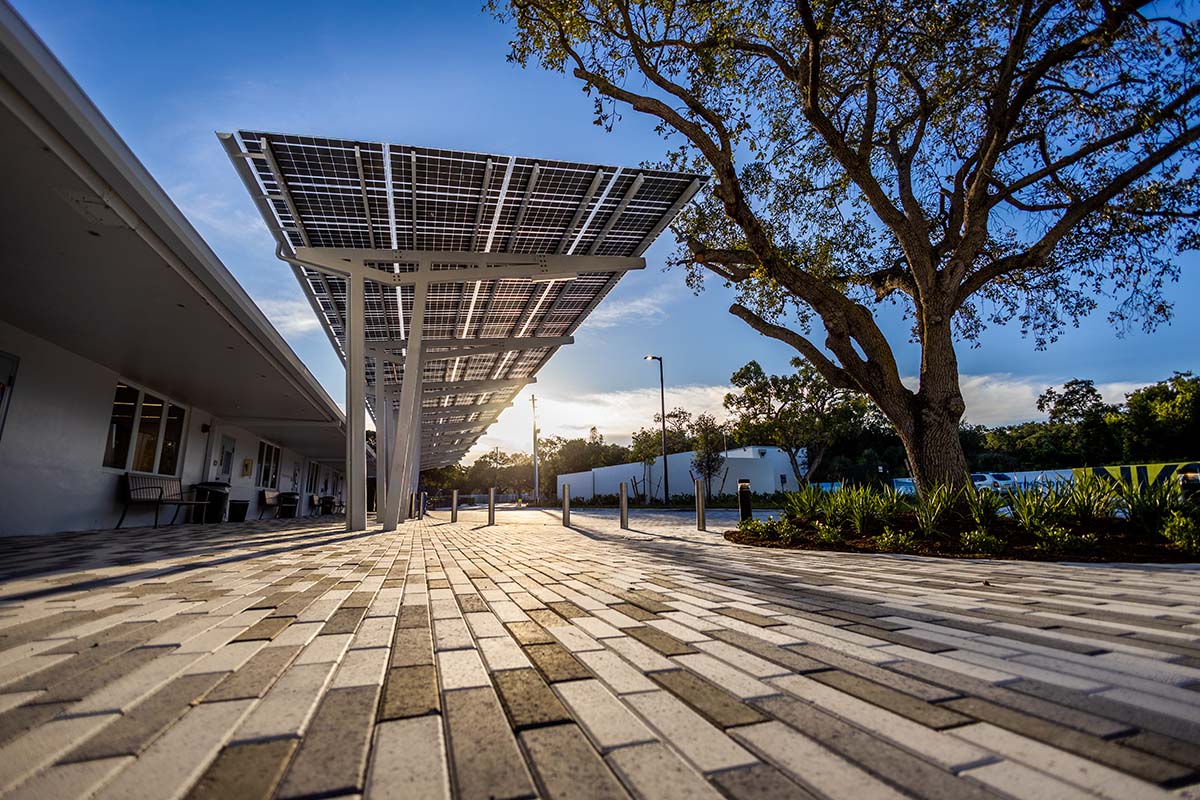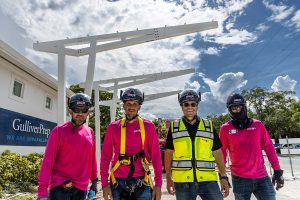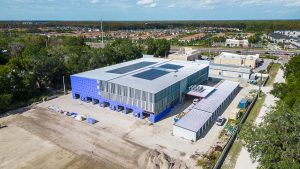
Enjoy the Sun Year-Round with Solar Power
Published on September 27, 2024Marina operators already rely on the sun’s power to bring boaters out for a day on the water. It may be time for them to take that reliance to a new level by incorporating solar energy into their operations. Solar does work in the rain. It may not be as cost-prohibitive as believed, and it has proven reliability dating back to the 1950s. With that in mind, the company PayOli is encouraging waterfront businesses to take a second look at solar.
In business since 2014, PayOli has provided solar energy to industries, residences and businesses throughout their hometown of Florida and beyond. PayOli is an engineering, procurement and construction (EPC) company. It works with customers from sales to consultation, engineering and permits, materials procurement, installation and post-sales services.
“We help our customers understand how solar works, looking at what their energy consumption is now and how they’d benefit from going solar. We talk about needs, expectations and how we can help,” Juan Payares, CEO of PayOli said.
Myths About Solar Power
There are commonalities in why people shy away from turning to solar. Payares said one hurdle is the belief solar is still a new technology, so people should wait until it’s proven. “Solar energy has been around since the ‘50s. There are solar panels in space that have been there since the ‘70s,” he said. “Through the years, the application for it has proliferated into everyday life. Are they reliable? Yes. The ones in space are still there. Waiting for the technology doesn’t make sense. It’s proven.”

A second myth is that solar won’t work in areas where the sun often doesn’t shine. Payares explained that solar energy can work on cloudy and rainy days, as well as sunny ones. The panels may not absorb as much energy on darker days, but they are still working. Payares commented that he has solar panels in his yard close to an interstate, and even the lights from the interstate can trick the solar panels into thinking the sun is out, so they still produce. He also said that the country with the highest consumption of solar energy is Germany, and it traditionally has six months of rain each year.
Another common roadblock to adopting solar is the cost. There is an assumption that it takes many years to cover the initial cost of the panels. However, there are still many incentives available to install solar panels.
“There’s a 30% tax credit and bonus incentives to make the investment attractive,” Payares said. “You can write off about 55% of the initial investment by combining incentives.” He further explained that his company, and most others, offer financing options up to 30 years. That’s less time than the average three to five years it would take a marina to start seeing the cost benefit of solar energy. Once installed, energy bills decrease, and owners no longer need to worry about fluctuating electric rates, he said.
Installation Options
The options for installing solar at marinas are wide. Rooftop panels can be installed on most roofs from covered slips and gazebos to service sheds and drystacks. “A marina could install a solar canopy over its parking lot and combine that with EV charging stations so the whole system is powered by the sun,” Payares said.

For facilities that have unused upland, ground-mounted solar panels could be installed. With limited land space and few buildings, marinas still have the ability to install floating solar solutions, especially for marinas with a higher energy consumption. “Floating is a bit more expensive because the materials must be rated for wet and fully submerged conditions and permitting can be a bit tricky. But just like the energy lines that float under docks, the equipment can meet code and be perfectly safe,” Payares said. All solar installations must meet the requirements of the National Electric Code as well as local codes, just like any other electrical installation.
While there are options for where to install solar panels, Payares cautions that choosing a skilled installer for the panels is not optional. Every installation requires different anchoring, waterproofing, flashings and racking depending on location, climate and even roof type. Shingle, concrete and tile roofs all have different needs. “There’s a lot of engineering involved, and the work shouldn’t be done by someone without experience,” Payares said. “Look for a Solar PV contractor. An electrician may understand panels, and a roofing contractor may know installation methods, but you need to hire a company that has expertise in it all.” He added that solar is a long-term investment, so choosing a company that you trust to provide service over the next 30 years is important.
Marinas that are interested in solar energy should reach out to reputable and recognized contractors with a track record of spotless execution and the ability to show they’ve done projects of similar scale, Payares said. Whoever is hired should know how to manage the design constraints of a marina.

The people at PayOli start a project by looking over satellite imagery of the area and asking the customers questions related to their electrical needs as well as more specifics, such as what type of roofs they have and where the electrical connections are located. From that information, PayOli can create a preliminary proposal. If the customer agrees to the costs, a site visit is conducted to finalize the plans. Payares said the engineering and permitting can take four to six months to complete, but installations are generally done within a week or two. The installers work in stages to avoid disrupting the operations of the business so that a marina would never need to shut down.
The company is new to the maritime industry but is already bidding on several projects in Kentucky and Florida. Payares said marinas should understand that installing solar panels can increase their property value and that they require minimal maintenance beyond pressure cleaning. A low electric bill will appeal to buyers. “The biggest roadblock I see is that people need to be willing to adapt and change from something that has been the norm throughout our lives,” Payares said.
As marinas modernize in many other aspects, it may be time for a power shift.
| Categories | |
| Tags |




